Weathering: what’s your game?
One area that many modelers either love or loath is getting some sort of used (and sometimes abused) look on their models. AFV modellers have been at the spearhead of weathering products and techniques for quite some time, at least that's my opinion. However applying wear and tear to tank isn't the same as to a plane or ship obviously.
Still in my opinion, getting this step done in a model is as important as doing a good job assembling parts or getting a fine paint job.
Here's 2 methods I use, oils and washes, that together with other techniques/materials can really improve the overall looks of the completed model.
One of the elevators has a first wash with oils (I use Artist oils brands and Abteillung 502), the other a wash being applied with Florys products, a completely different approach of the former method.
Both have advantages and disadvantages, and both can easily be used in any genre of modeling.
I would like to know your opinion about this and how you do (or don't do) weathering on your models;-)
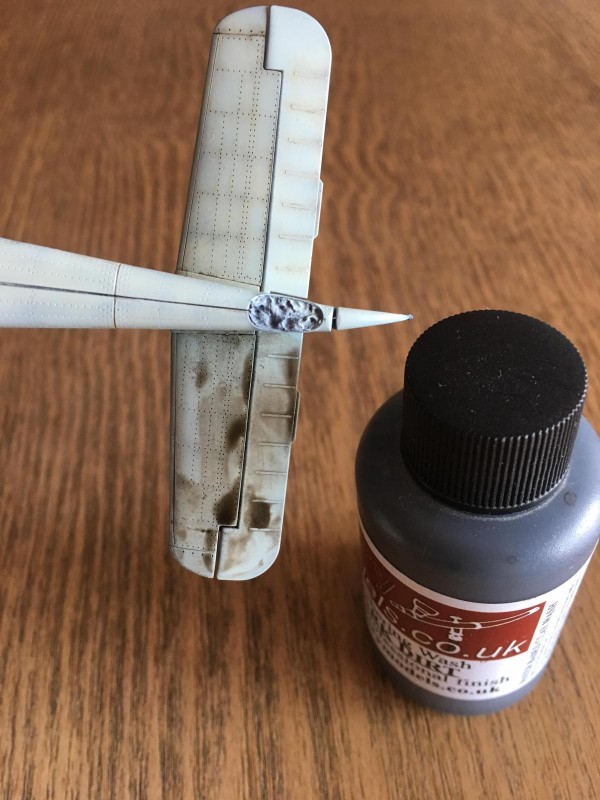
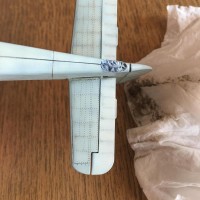
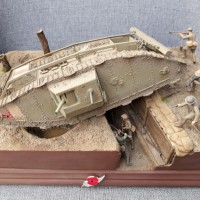
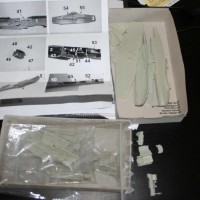
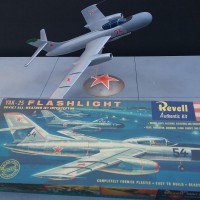
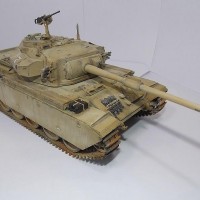
Looks great !
Nice article, Pedro. The Abteillung oils are superb, and like you, I use regular artists oils (stick a ‘special modelers’ decal on the product an you can triple the price) after spraying a sealing coat on the paint. I’ve recently been using MiG pigments, which are beautiful to work with in powder form to blend and post shade.
Thanks for starting this thread, a very important (and very taste driven) subject in the hobby. Personally, I like a lightly weathered ‘new used’ look across the board in my projects.
‘Liked’
Thank you David for coming up and give your insight on this. That is the point I am looking, you know, opinions and best practice sharing basically.
As a matter of personal taste I tend to go halfway between no weathering (just preshade) to heavy stuff, a sort of in between balance I guess. All my built models are based on combat weary planes so no “off the factory” effect, though I still have one or two in the stash that will fall under this category.
However, some weathering is just about what you often call “artist view” that each one of us holds when building a model, some contrast or depth, that gives the finished kit a less toy(ish) semblance
It depends on the subject.
Sometimes a clean presentation is good enough because it could be a prototype or trainer which is kept very clean.
On the other hand I moderately to heavily weather certain subjects like any modern (ish) carrier based US Navy plane (especially the gull grey/white or grey grey grey modern schemes) because the salt water/carrier ops is cruel to the paint (and usually based on actual pictures.)
I've used watercolors and pastels to weather for a long time. It doesn't stick like oil paints and is quite fragile. However, it doesn't have the chemical side affects of mineral spirits which is primarily why I use them. I have bought some oil paints and turpenoid, but I only use them when I can vent out the fumes.
Dan, that’s a very interesting point about the health hazards coming from chemicals like white spirit and turpentine. God knows Inuse that stuff indoor and not always with an open window.
Watercolours is something I have never tried, and to be honest never even crossed my mind using.Do they blend over the primary colours as softly as oils?
Thanks for contributing
They can. It takes more work than oils though. Also have to be the right mix about 60% paint and 40% water. I also add a drop of dish soap to improve flow and stick.
Here are some examples of my models weathered using water colors. The heaviest is the M51. The F-16XL and F-14A are more examples of light weathering which I prefer to do on aircraft.
3 attached images. Click to enlarge.
Nice! Thanks for the input Dan, clearly a medium everyone should consider using.
Pedro. Ahhhh, the black art of weathering...LOL
Like Dan and David mentioned, depends on the subject matter:
If it's a pristine off the assembly floor build: some light panel/crevices darkening with a wash of diluted artist oil paint...usually dark umber. Finished with a light coat of clear flat.
An aircraft to sit on the display shelf but want a "lived in" realism: wash of artist oils, heavy around engine panels, cockpit, etc., after which highlighting done by dry-brushing lighter shades and complimentary colors and possibly white to make the very small details and edges stand out. Metal edges highlighted with a regular pencil. Finalized with a light coat of clear flat.
Along with dry-brushing oils, i also use pencils of different colors as well as Tamiya and Vallejo pigments, wet and/or dry, as other methods of highlighting, scuffing and exhaust stains, etc.
A full blown weathered look for an aircraft or armor diorama: All of the above and additional weathering to suit the build, ie; mud, damage, etc.
To make a long story short...there is no exact science to my weathering...why I call it a black-art. Simultaneously or separate, I use many combinations of what I've mentioned above but I also like to experiment with new techniques.
BUT...if I were to give one overall piece of advice...and the hardest part to learn...would be: JUST WHEN YOU THINK THE MODEL NEEDS A LITTLE MORE...STOP!...IT WILL BE TOO MUCH!
Great subject, Pedro! Keeping it fun!
Gary
Ahah, the black arts 😉 That is so true Gary, I’ve always seen that what really made a model stand above its peers is how good and realistic the weathering is, and achieving that level...well that can be true alchemy.
Fact is nowadays we have an abundance of products specifically targeted to this final step of the build. There are plenty (like David mentioned) that are basically what is already available under other name, but just got a new label and up goes the price, but even so there is truly new stuff on the stores. And with it most of us can now feel more confident in a terrain that 10-15 years ago was only mastered by a few (oh how I drool looking at some Verlinden magazine models and dioramas back then...I still do Lol).
My preferred method is salt weathering, Doc O' Brien's weathering powder which can be thinned with water and use as a panel wash. Water colour paint can also be used as a panel wash. Tamiya weathering kits also come in handy.
Good hints Morne! The salt method, or similar, is something I only used once, but the it’s effect (when wisely used) can be terrific. Sooner or later one of those white washed winter camouflage will be the subject on the bench and I’ll try it big time
The main thing to think about with weathering is the "story" - how and where the real thing was used. Here's some "for instance":
Sun-fading/weathering: this changes from place to place. For instance, an airplane being used in Western Europe will not be as "dinged" because it didn't fly as often - where guys on the eastern front were flying 3-4 times a day, guys in the ETO were flying 3-4 times a week. Also, the cloud cover in Western Europe means that sun-fading happens at high altitude and is affected by UV rays, thus the paint goes "purplish" the more often it is so exposed. Conversely, an airplane in North Africa gets sun-baked. An airplane used in the Solomons was getting minimal maintenance, just the important stuff, so "dings" multiplied the longer it was there, combined with sun-fading - it's almost impossible to weather an airplane used there too much. Then you look at a plane being used on a carrier, and those "dings" you see modelers do on Hellcats and such were never there - the dings got covered with paint quickly to avoid salt water corrosion.
The research of how/where the original was used can be really interesting, and the result can be some very outstanding and different models.
The operational background of the plane/tank has all the importance for this matter. You have pointed several excellent points there, to what I may add the weather/season in which the depicted model was operating at that photographed moment. In planes, if it flew from concrete airstrips or forward makeshift strips, etc, etc. Thanks for bringing this aspect to the discussion Tom! By the way, what is a Ding?
Pedro, a 'ding' is referring to the knocks and scrapes, and overall wear and tear that an aircraft will suffer during its service.
Thanks Charles, scruff is the word that comes to my mind 😉 my vocabulary just got richer
my approach is more "this should go like this, lets see what will happen" and relying on happy accidents
Ahahah, that’s stress free modelling! Like all in life, I guess somethings can turn out unexpectedly good.
For me "weathering" is a combined process that involves actual wear and the result of the conditions but also to reinforce shadows around hatches, rudders and the like.
That’s a fine definition Stellan, thank you! What are your preferred tools for it?
Usually oils for deeper effects and airbrush for tonal works. To bring a bit more information into the picture I sometimes add fresh paint to smaller details to make them pop. I found that three effects or nuances are what it takes to make things interesting for the eye. Less is not enough, more is usually a waste. No hard rule to this though. Graphite is a good metal enhancer at times and different levels of dull/gloss is also a good way to create effects, just have a look at an old aircraft and you will see different textures and finishes to metal areas and fabrics. Add wood, leather, fluids, rubber, plastic, rust and dirt and you are home.
It depends on the subject, but generally I believe less is more on a scale model. Washes, pastels, and occasionally post shading are my favorite methods. I’m not big on preshading.
John, glad you mention post shading as one of the tools of weathering. It was my first try at getting some depth along the panel lines, using a highly diluted black and dark brown mix, a hard edge thick note paper and low psi airflow. However it’s been years since I used it, since I found what I believe are more realistic ways of getting that result (mainly the pre shade and oil wash). That said, post shade is a very useful tool and used by skilled hands like yours can produce great results
Weathering to me is between a rock and a hard place. I want to do it but I really want to move on to the next build. I usually I keep it to a minimum but when doing a Pacific theatre B-25 for instance I feel obliged to create a well used and faded look, but still the next kit beckons!
Some model subjects can be more demanding than others when it comes to wear and tear, but in the end what matters is your own satisfaction with this hobby Haslam, thanks for the input!
I'm a weathering fan, simply because I like the extra level of interest it gives a model. One area where I think that collectively the modelling community hasn't yet got such a good repertoire of techniques is weathering natural metal finish. Maybe because aircraft modellers have taken their weathering cues largely from the armour world? Anyway, it strikes me as an area of exploration still, and that could be fun.
Stephen, now that’s a very interesting thought no one here mentioned till now, I believe. Have you weathered any NMF model? I know I did not and the thought has crossed my mind often since I hope in building a P-47D soon. Any hints are greatly appreciated! Thanks for the input
In the last few years, weathering has become my favorite aspect of a project, as it begins to migrate the "toy" look of a totally clean model into a "replica" of the real thing. I do have a few standby tools that I use on almost all (acrylic panel line wash for example), but I often experiment with new stuff, or mix things up. Sometimes I'll use both drybrushing/stippling as well as silver pencil to get the silver chipping I want. I may use both oils (washes and filters) as well as water color pencils for stains and leaks.
I'm not above "cheating" the effect a bit to bring up visual interest, especially in such areas as a 1/72 cockpit with a closed canopy. If you don't overdo it a bit, it just looks like a black hole, but if you add some extra shadowing (such as to the pilot) and highlighting (seat/frame edges, etc.), then it just looks more visually interesting than if it was "to scale."
I use oil paints (dot filters, wash filters, stains, etc.), Tamiya sets (exhaust/gun smoke), pastel chalk powder (post shading, grime/dirt, exhaust/gun smoke), water color pencils (stains, leaks, scratches), silver pencils (chipping and highlighting), dry brushing (highlighting, grime, chipping) - and anything else I see someone do!
Greg my friend, you basically scroll down the entire weathering alphabet here 🙂
Dry brushing is also one of my favourite, so thanks for bringing that up! More useful for darker colours (especially cockpits like you also mention to use at), but also use it on exterior areas just a bit more restrained . It is my opinion that when overdone in the exterior parts it just ruins the desired effect, and can bring the look of the model back into a more toyish look.
Never used Tamiya weathering sets, but read and heard positive feedback from it. What I do have, but don’t use that much are the similar stuff from AK. They do perform quite well nonetheless. Thanks for inputs Greg
Great tips Pedro.
It really highlights the details.
I use to use an artist gauche diluted with water.
I used Flory wash now as it can be used straight from the bottle.
Thanks Julian. Flory wash are also on my workbench (as seen in the photo above). They are easy to handle, no fumes and fast to apply. Basically they are the allroad of washes. However I feel that I can get a much more refined effect with oils, that have none of the positive points above mentioned, except the ease of handling. But hey it’s a personal choice. They are my GT 😉